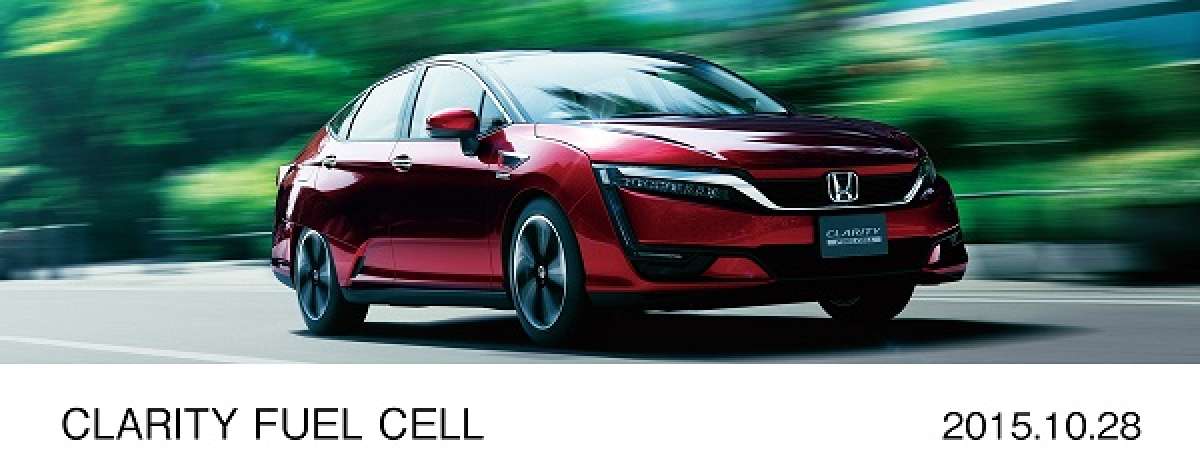Los Angeles, California is ground zero for alternative modes of personal transportation and the development thereof. Air quality, and traffic flow is chief concern for Californians that live and commute in the Golden State’s largest cities, counties and urbane entanglements.
Next week American Honda Motors will unveil the all new 2016 Civic Coupe and production Clarity FCEV at the 2015 Los Angeles Auto Show.
There’s no getting past the fact that without stringent regulations pressed by sometimes radical legislation, you couldn't live and breath in cities like Los Angeles, Sacramento and San Francisco, much less smog choked San Bernardino and the foothills of Pasadena.
Honda and Toyota are headquartered in ground zero
Torrance California, the site of American Honda Motors and Toyota Motor Sales U.S.A, sits a virtual stone's throw from Los Angeles County California, the largest auto market by volume in the United States. Here too is a growing Hydrogen Fueling network funded by the automotive industry and the State of California.
With an initial matching investment of $100,000,000, California will soon have the only viable Nitrogen Fueling Network in the United States. And much of that access will be limited to Orange County, Los Angeles and Sacramento County, with a station or two for San Francisco Bay area and Silicon valley.
Although Honda has put 70 leased FCEVs on the roads of Los Angeles over the past decade, Toyota comes first to market with the Mirai. Torque News viewed Mirai FCEV at the 2014 Los Angeles Auto Show. We spent a few moments speaking with Toyota employees that had actually driven Toyota’s FCEV on the roads of L.A. and Orange County. They loved it, spoke of the seemingly endless torque and quiet delivery of Hydrogen Fuel Cell charged Electric Vehicle power. Would they drink water from the exhaust tail pipe?(You may check out Mirai here.)Is fuel cell residual H 2 0 portable?
Well, that is another question. Although water is the only bi-product produced by Hydrogen Fuel Cell generation, the liquid Hydrogen fuel in this case is extracted from fossil fuel. And for many, that is the problem that environmentalists and plug in EV proponents have with current Fuel Cell technology; they believe it to be fundamentally “dirty”and unsustainable in the long run. Could be!
But very cool just the same
Honda and Toyota bring to the alternative propulsion game a technology that in some form or another has been in development for well over 60 years. Massey Ferguson Tractor Company was the first to utilize a Fuel Cell fired engine for agricultural application back in the 1930. The difference back then was that the Hydrogen was derived from crop or dung generated methane gas. And the integrated fuel cell generator, in the case of the M.F.Tractor and the Chevrolet Van of the 1960s was as large as a stand up piano.
Torque News touched on Honda FCEV development back in 2013, you may catch that article here. Honda’s claim to fame is the development of a fuel cell the size of a modern internal combustion V6 engine, allowing Clarity to seat a driver and four passengers in a midsize platform while traveling an estimated 300 miles between fill ups, reported to take 3 minutes.
Why not Fuel Cell now?
Honda’s been a bit conservative in the release of a production FCEV. Due to market conditions, public acceptance, cost of production and a glaring lack of refueling infrastructure, Honda, G.M. Toyota, Mitsubishi, Hyundai. MBZ and whoever else has the mozzie to step into the unknown of Hydrogen Fuel Cell viability, initially participants will be introducing a technology at a financial loss.
Where do we go from here?
looking to the North American auto industry, manufacturers rather domestic or import seem to be focusing on internal combustion engine management, gasoline, electric hybrid and standalone plug-in electric vehicle production.
The lone wolf is Fuel Cell Electric Vehicle development and production. California is betting on it, as well as several East Coast Cities. Where the FCEV movement will go is anyone’s guess at this time, and he’s not saying.
Free of fossil oil dependency and the P.U.C.
The United States Navy is developing a technology where Hydrogen is essentially “cracked” from sea water. The energy cost of the distraction is prohibitive due to the electrical generation required to do so. The same is true for refined fossil fuel derived Hydrogen. So, until a “green” or passive method of separating hydrogen from water or bio waste produced methane is developed, FCEV will remain the black sheep of the electric vehicle movement.
None the less, I look forward to seeing 2017 Clarity FCEV in person at the 2015 Los Angeles Car Show. The big question remains: Are consumers ready to part with $60,000 to drive one? Hey, if you see me at the Los Angeles Auto show please say hello.





